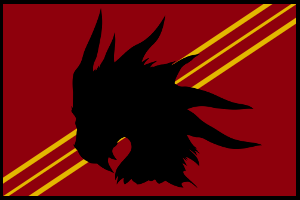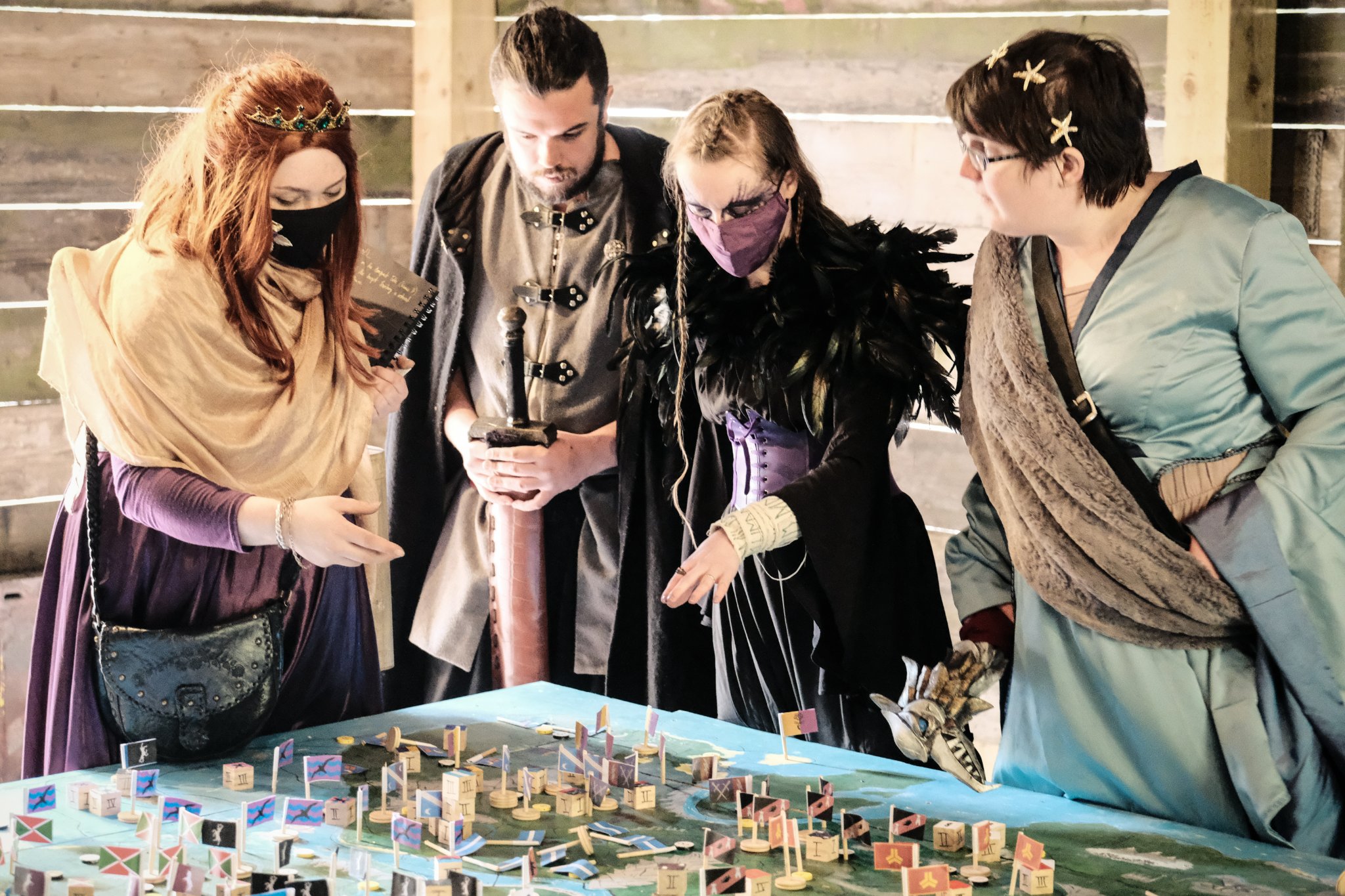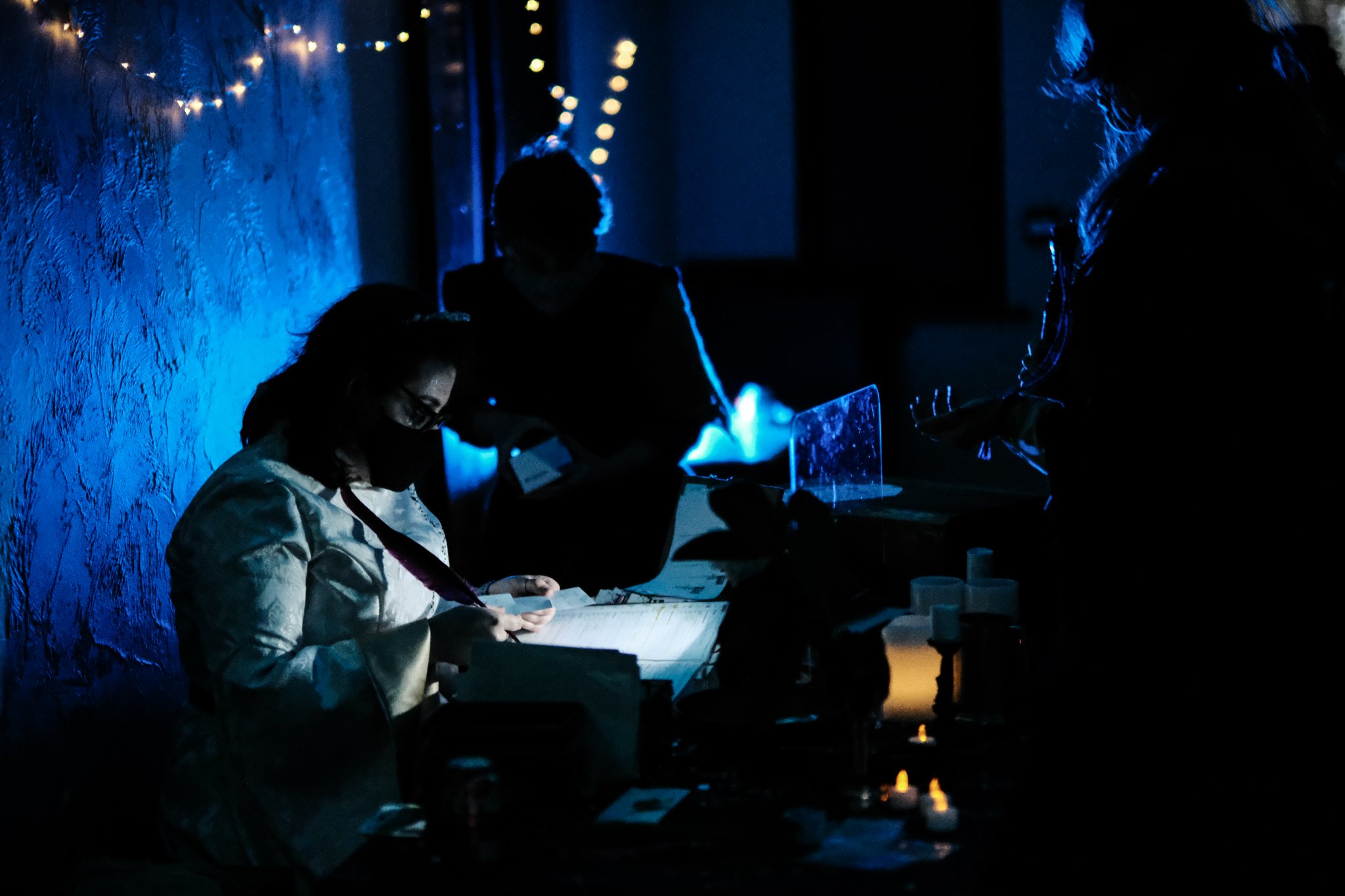Table of Contents
Camelot
Reforged from Ruin
After the consequences of the doors to the Hundred Realms being flung open for Behemoth and its Lost Worlds by the construction of seven Gateways, the devotion to Camelot held by Eirik and its people was used to create a Lifeline Hook that purged Behemoth's influence from the lands of Albion. In the aftermath, the joining together of Monarch Eirik and General Morgana Pendragon has seen Camelot's armies once again take to the world to unite it under one banner.
Unity Of Purpose
As Camelot and Albion were reforged stronger than before after the testing fires of the Lost, the first of many Realms bent at the knee to swear allegiance to Albion and join together to aid General Morgana in reuniting the world. Cedunon, the home of the Green Knights, swore its considerable lands and powerful army as a Vassal State to Albion, making Albion the strongest Realm in military might alone and largest holder of lands. Now the question is posed: what will be done with it?
The Crux of the World
Positioned at the heart of the Hundred Realms, Camelot holds position as the Crux of the World around it. It still holds itself as home to the The Oracular Mirror that brings Realms together for the most civilised form of warfare as well as the Fonts of Magic that Mages use to power their spellcraft, and the work of Eirik to rebuild it from its ruins has seen it once again turn into a bustling city. Though it still lacks the all encompassing reach of Arthurian Camelot, Eirikian Camelot looks to be becoming once more a nexus of political power, military might, and immense magical potential.
In the aftermath of the Second Fall of Camelot it became clear that not only is this place of symbolic importance, but its purpose as a fulcrum of the world was metaphysical in nature too: should the Realm of the Lost fall or lose power, the whole world will be in jeopardy…
The Oracular Mirror
See also Conquest.
Before Camelot, it is said that the world consisted of warring factions that fought tooth and claw for minimal benefit. Wars would last for years with neither side making any gain, boundaries between nations moving feet at most. Trade and parlay between leaders was nigh impossible for fear of being killed, and the world stagnated.
Then came Arthur. It is said that having pulled the Sword from the Stone, one of the young leader's earliest quests had him find a great Oracular Mirror that could tell the fate of what would come. Using the power of this mirror, Arthur was able to make plans to consolidate his gains after victories, and prepare for the impact of the defeats. Using this knowledge, Arthur and his armies were able to do what few before had achieved and united the warring rulers of the world by sword or by word. With the world united, Arthur then used the power of the mirror to protect the people of the world, and to prevent uprisings with minimal bloodshed: a new, kinder warfare.
Of course, all this changed with the Fall. The Mirror was said to have been broken before the Battle of Camlann, a contributing factor to Arthur's defeat, and as the Mirror splintered and fractured so did the world into the Hundred Realms. Wars became bloody affairs once more, and borders failed to move for years.
That is, until Merlin fixed it once more, and invited all leaders of the Hundred Realms to utilise its wisdom: to submit their plans for warfare for the next year to the Mirror and be told the events that will follow - the events that will come to pass, so that armed with that knowledge they might return to the kinder warfare of Arthur's time.
More cautious tellings of the Mirror's legend include a warning: that, as with all magic, knowing the future comes with a cost - while Arthur was able to inform his generals of what would come to pass, those that tried to change the outcome met with a terrible fate and only worsened what they intended to prevent.
However the Mirror works, time is of the essence, for the Oracular Mirror has publicly predicted its own permanent destruction at the end of the Seventh opening of Camelot after the First Fall.
The Fonts of Magic
The Fonts of Magic are a powerfully magical location that manifest within Camelot in which mages are capable of expending Magic Beans and other resources to craft their spells. This is the only location in the world where Beans can be crafted into spells with such ease, though determined practitioners can create their spells elsewhere with enough effort.
History
Fall of Camelot
Though Camelot under Arthur was in its prime, every story comes to its end. In the Battle of Camlann, Arthur was defeated by an army of upstart Saxons from the north, betrayed by his close friend Mordred, and mortally wounded. Camelot's forces were routed and Arthur was taken swiftly from the field of battle by Merlin. Mordred vanished and the leader of the upstarts, Serena, claimed Camlann as her own. She constructed there a great stronghold and conquered the nearby Dark Mountain and Lake of Diana, declaring a new Realm of Saxon Lands.
It is unclear exactly what happened next or why, but several events that followed are common knowledge:
- A dark cloud encapsulated Camelot for months before disappearing. Nobody has been able to leave or enter Camelot since the Fall.
- The Kingdoms that Arthur had united as Albion no longer had a strong leader to follow and fractured into factions. These factions themselves collapsed through in-fighting into a hundred realms: each with their own agendas, own declared monarchs and generals, and each waging war against their neighbours.
- Rumours of Dragons attacking across the world became more frequent, and confirmed Dragon sightings were made across the world.
- Law and order broke down, with each realm enforcing its own law to greater or lesser degrees of success. Villages were and continue to be frequently sacked by marauders, travellers are often robbed by bandits, and corruption is commonplace in courts of quickly-assigned seats of power.
- Witches and Sorcerers became increasingly common and their acts increasingly unpredictable - great (and terrible) deeds of magic began to be performed more freely across the world without Merlin there to guide or prevent.
Arthur's Invitation, however, may change all this. With Camelot's gates opening even for a short time, and the word of the Once King to change the way of the world, who knows what may lie in store?
The Great Shroud
Though the dark cloud that enveloped Camelot after the Fall dissipated, the magical effect of it has not. The enchantment on the city, known as the Great Shroud of Camelot, prevents all from entering or leaving the city. Arthur's invitation to Camelot likely means that someone, probably Merlin, has found a way to lift the Shroud temporarily to let people in at the start and out at the end. However, the wording of Arthur's invitation makes it clear that anyone inside will be unable to leave the Shroud during the great meeting… unless they found a way to break the Shroud.
As of Tales Untold Chapter Two: The Plot Thickens, a great magical blow has been struck against the Shroud of Camelot. The effects of this are not yet widely known.
As of Tales Untold Chapter Three: A Twist of Fate, it is known that the Shroud has been destroyed, though the lasting effects of this are still not fully understood.
Second Fall
The revival of Camelot was perhaps too good to be true as during the fourth gathering since the reopening of Camelot, the Knights began to die one by one until eventually Arthur was slain by Mordred. This caused the very foundations of the Realm to be shaken and the people of the Hundred Realms acted with haste to select a new leader to keep the Crux of the World in balance. They selected Eirik the Lost who swiftly saw that Excalibur be reforged, wielding it to slay Mordred and announcing that Camelot would now be known as the Realm of the Lost.
Camelot's story did not end here, though, for that night a coven managed to reach over the river to Avalon and bring Arthur, Lamorak, Gawain, Guinevere, Lancelot, and Mordred back, but they now claim no title and seek only to see their stories finish in peace.
As for the Realm of the Lost, that's another story...
People
The Knights of the Round Table
The famed Knights of the Round Table were Arthur's most trusted compatriots. Though they numbered many in Camelot's prime, those like Arthur that survived the Fall still walk the Ruins. Nobody is yet sure of their intent, though they are known to be powerful paragons of their own specialisms. Of the members of the Round Table, the following are heavily rumoured to still remain:
- Arthur (since the invitation is in the old King's name)
- Guinevere (who is mentioned by name in the invitation)
- Lancelot (the invitation mentions a Tournament, and who else would organise it but Lancelot?)
- Merlin (Arthur mentions his Sorceror, that has to be Merlin, right?)
Just before the Battle of Camlann, the rest of the Round Table's members were:
- Bors the Younger
- Percival
- Gawain
- Bedivere
- Kay
- Galahad
- Mordred
As of Tales Untold Chapter Three: A Twist of Fate, the Knights of Camelot have been free to travel. Some have met an ending, others still roam and have not been heard from. The current complement of Knights still in Camelot includes:
As of Tales Untold Chapter Four: Too Good To Be True, the Knights no longer claim any position in Camelot, save for Ser Verdant…
The God of Albion
Before Arthur united the lands under the banner of Albion, religion was a thing of small practice usually influenced by the history of the villages and town's which practiced them. However, with the popularization of King Arthur, the knowledge of his ever lasting quest for the Holy Grail seeped across his Realm and The God of Albion - creator of the Holy Grail - began to be worshiped on a scale never seen before. Said to be a symbol of truth, loyalty and knowledge, people who show devotion through courageous acts, heroic deeds and use of magical sacrifices.
However, as the years drew on the Grail left un-found, many scholars - including Merlin himself - lost faith in the existence of such a cup. With belief on the decline, the fall of Camelot lead to the sanctity and holiness of The God of Albion being called into question. Now, the Realms that follow the old ways are fewer and fewer and it is said that new, more popular religions are popping up in it's stead.
OC: Please note The God of Albion should always be referred to in the whole. This is not the God of Christianity and should not be referred to as such.
Artefacts
Excalibur
Legends tell of Arthur's great sword, Excalibur: magically powerful, and peerless throughout Albion. Retrieved from the Lake of Diana on a quest by Merlin and Arthur, the sword was rarely glimpsed in battle, but whole armies were rumoured to have been routed by the sight of it in Arthur's hand. The sword was lost during the Battle of Camlann and its location, and indeed whether it survived at all, is currently unknown, even to the occupying Saxons.
As of Tales Untold Chapter 4: Too Good To Be True, Excalibur has been reforged and renamed “Hope” by the ruler of the Realm of the Lost.
The True Grail
Long since debunked as make-believe by Merlin and other scholarly Mages, the story of a cup of Pure Magic still excites the imaginations of many across Albion. Many quests went forth from Camelot in pursuit of the Grail, but none were successful in finding more than hearsay. Over time, most of the Knights gave up hope that such a cup ever existed.
OC: Quick Guide to Camelot History
Any information on this page your character can choose to know IC. For convenience, we include below a list of things your characters may know. Importantly, please be aware that this Camelot is not in Britain and Albion is not England. Similarly while we are using Arthurian Myth as a basis for our setting, we are not following Arthurian myth to the letter. See Style and Influences for more details on this.
- Albion was the united realm with a capital in Camelot and a King in Arthur
- Merlin was King Arthur's court mage and trusted friend
- Merlin was rumoured the most powerful mage in Albion
- Guinevere married Arthur and was Consort of Camelot
- Loyal Knights of Camelot and close friends of Arthur were selected to be members of the Round Table
- Members of the Round Table would be recognised and respected across Camelot
- The members of the Round Table before Camelot fell were:
- Arthur
- Guinevere
- Merlin
- Bors the Younger
- Percival
- Lancelot
- Gawain
- Bedivere
- Kay
- Galahad
- Mordred
- Arthur used the Oracular Mirror to aid his uniting of the world by foreseeing the movements of his foes and the outcomes of battles, allowing him to prepare accordingly
- The sword Excalibur was wielded by Arthur after he retrieved it from the Lake of Diana. The sword was said to be unparalleled in combat
- The Battle of Camlann was fought between the Saxons and Camelot. During the battle, Arthur was betrayed by Mordred and mortally wounded. The Saxons were victorious
- Merlin took Arthur from the fields of Camlann and neither have been seen since. It is assumed that Arthur died
- Mordred fled the fields of Camlann and has not been seen since
- Excalibur was lost during the Battle of Camlann
- After the battle a dark cloud fell over Camelot known as the Shroud. The cloud dissipated but nobody has been able to enter or leave Camelot since
- Since Camelot lost the Battle of Camlann, Albion has fractured into a Hundred Realms
- Arthur's Invitation marks the first communication from within Camelot in several years



